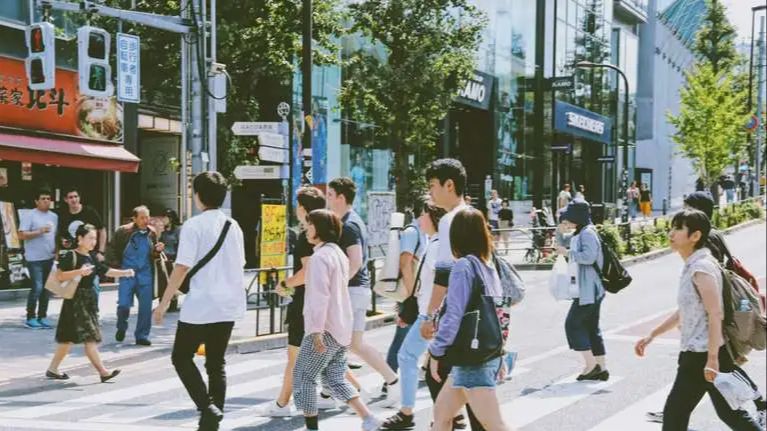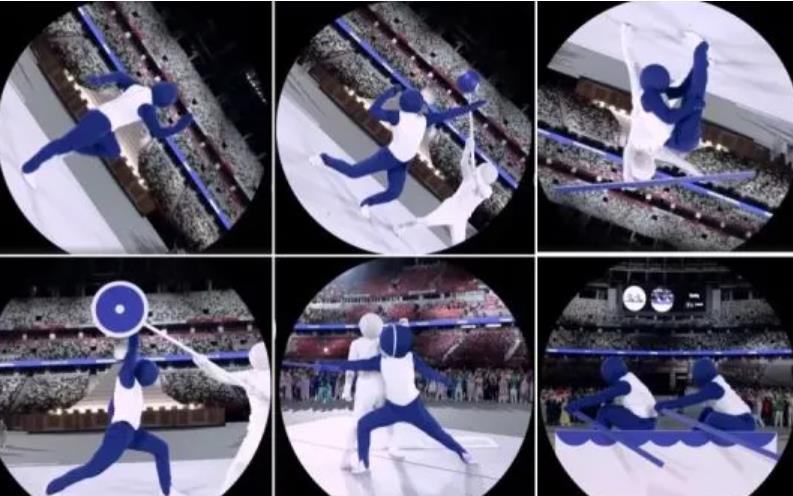
The "Super Transformation" performance segment of the Olympic opening ceremony
The most admired part of the entire event was the "Super Transformation" program, which garnered a lot of applause from the audience—three performers dressed in blue and white clothing used their bodies to sequentially recreate the Olympic icons of fifty sports, evoking a nostalgic sentiment reminiscent of Japanese variety shows from the last century, full of creativity, quirky fun, and sparking the imagination.
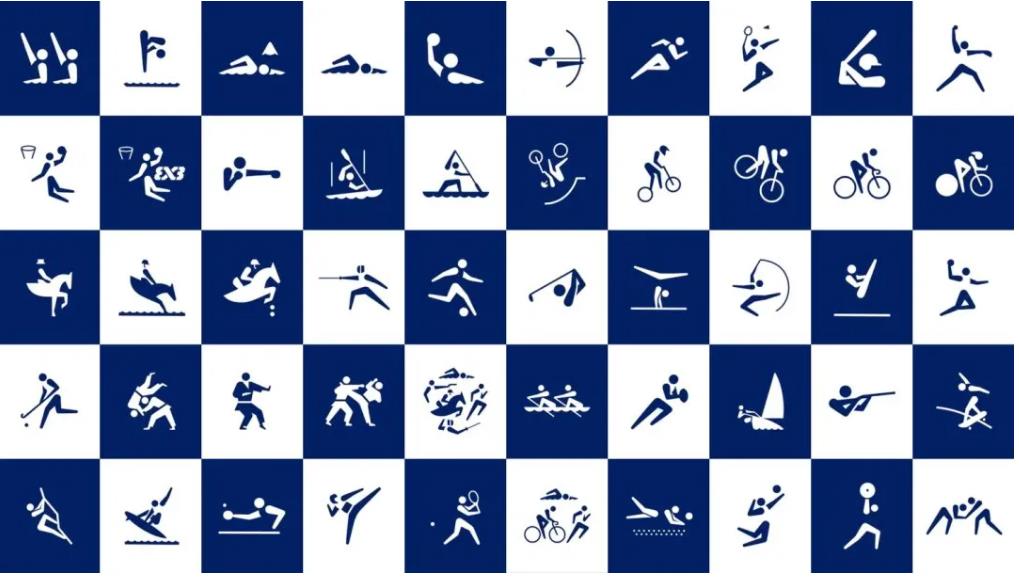
The designer of these icons is the renowned designer Masaki Hiromura, whose representative works include the Kyoto 9-Hour Capsule Hotel, Marui North Senju Food and Play Pavilion, and the signage design for Tianjin Library and the Beijing Jianwai SOHO. He spent nearly two years designing these minimalist icons, incorporating the wisdom of many people, as a tribute to the design legacy left by predecessors at the 1964 Olympics.
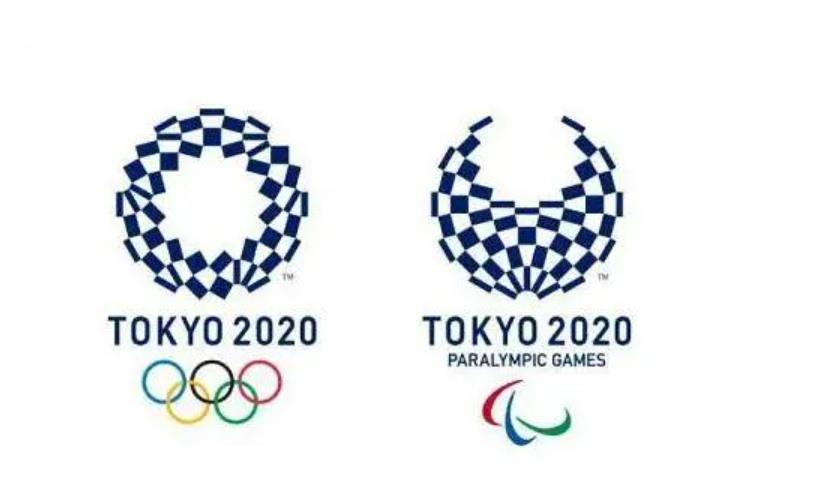
Tokyo Olympic Games emblem
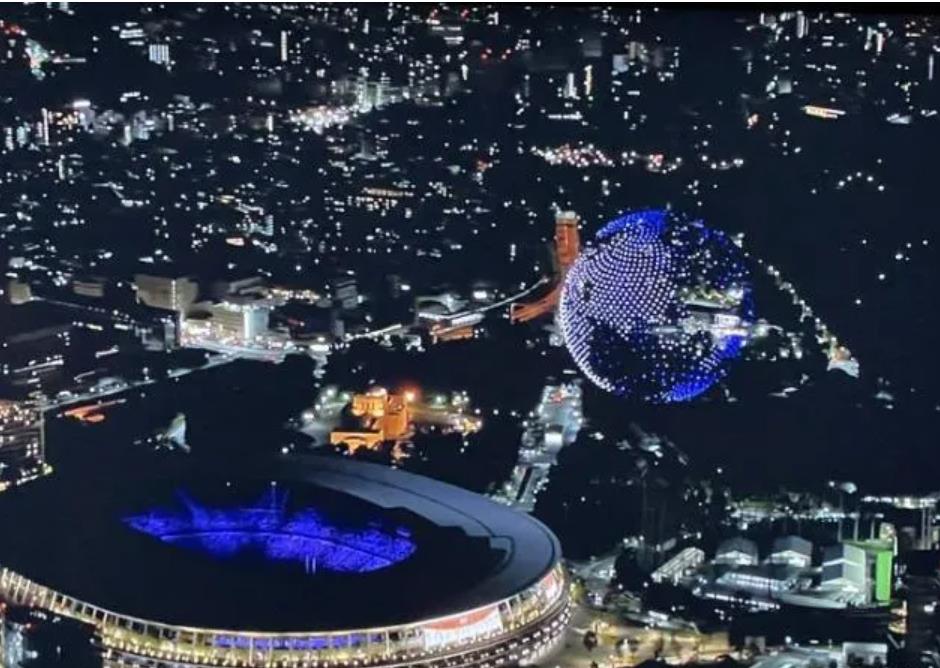
The Tokyo Olympic emblem was formed by 1,824 drones, creating a magnificent scene that echoed the emblem within the venue. Especially when the emblem rotated and changed in the night sky, gradually forming a blue Earth. This segment was full of technological flair and visually appealing; for me, it wasn't particularly novel, as a similar concept was used in the Pyeongchang Winter Olympics. The subsequent performance of "Imagine" by several actors genuinely moved me, reminiscent of Paul McCartney's performance of "Hey Jude" at the closing ceremony of the 2012 London Olympics, resonating strongly with music fans both on and off camera.
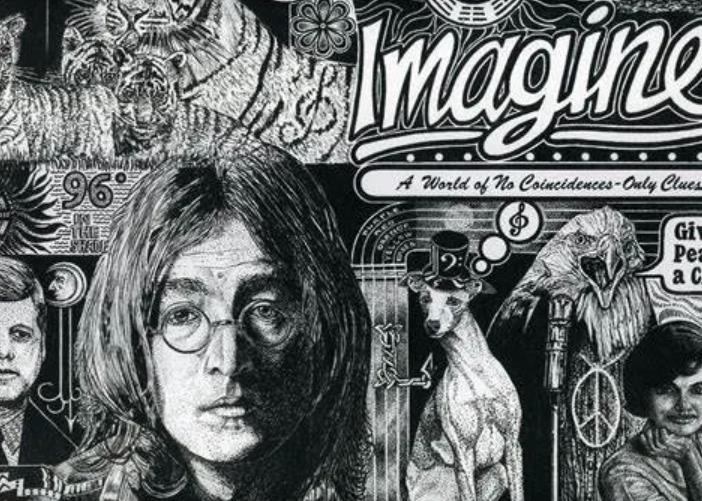
As a fan of John Lennon (The Beatles), I am very familiar with this song. The lyrics read like a poem, and the melody is simple and pure. This song has become synonymous with peace, anti-war sentiments, rational thinking, and the highest ideals of love (in a broad sense) in humanity. It encourages the audience to imagine a world without nations, religious sects, ethnic boundaries, killings, or hunger, where people are not estranged from one another, and all are brothers, sharing honor and disgrace—these are the beautiful wishes of kind-hearted people.
However, Lennon's vision has turned into a mirage. Currently, the world is still plagued by the pandemic, and wars continue to exist due to racial differences; tensions arise from differing values and beliefs; social stratification, with power and capital monopolized by a few, brings endless disasters to the lower classes; people's spiritual worlds are increasingly desolate, with low desires, aging populations, and declining birth rates becoming chronic issues in many countries...
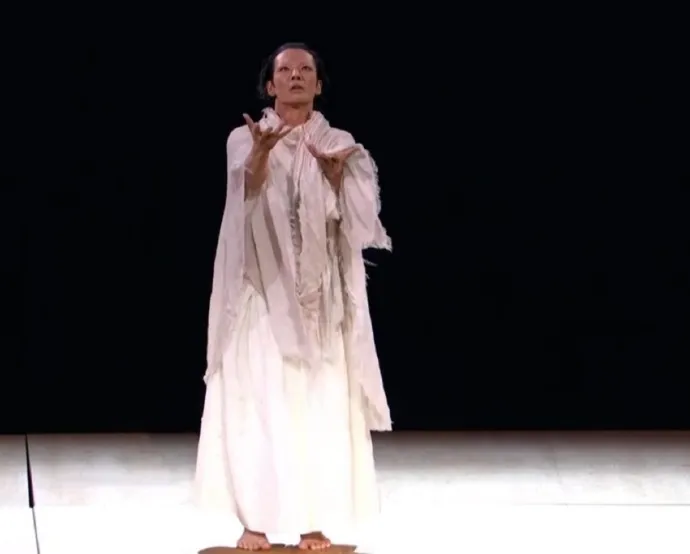
Miku Moriyama sparks controversy
The most controversial performance at this Olympic opening ceremony was Miku Moriyama's solo dance, which confused Chinese netizens who sarcastically referred to it as the "Underworld Opening Ceremony," stemming from a misunderstanding of Japanese culture. The performance incorporated elements of "Noh theater" and "ankoku butoh" (dark dance), with the Noh mask embodying "emptiness," an expressionless expression that is not the usual blank face, but rather a "void" that contains all emotions. In traditional Noh theater, the protagonists are often spirits lingering in the world, reluctant to depart, recounting their experiences in life, thus unfolding the story. The mournful melodies, the ambiguous smiles of the Noh masks, and the religiously colored dances—Noh theater resembles a dark ritual connecting life and death, reality and illusion.
On the tenth anniversary of the 311 Great East Japan Earthquake, a documentary clip of the memorial dance "Re: Incarnation" at Kiyomizu Temple shows a connection to the memorial dance at the opening ceremony. Miku Moriyama is also the lead in the stage play "The Ghosts and Monsters of Unrequited Love," where he plays a spirit.
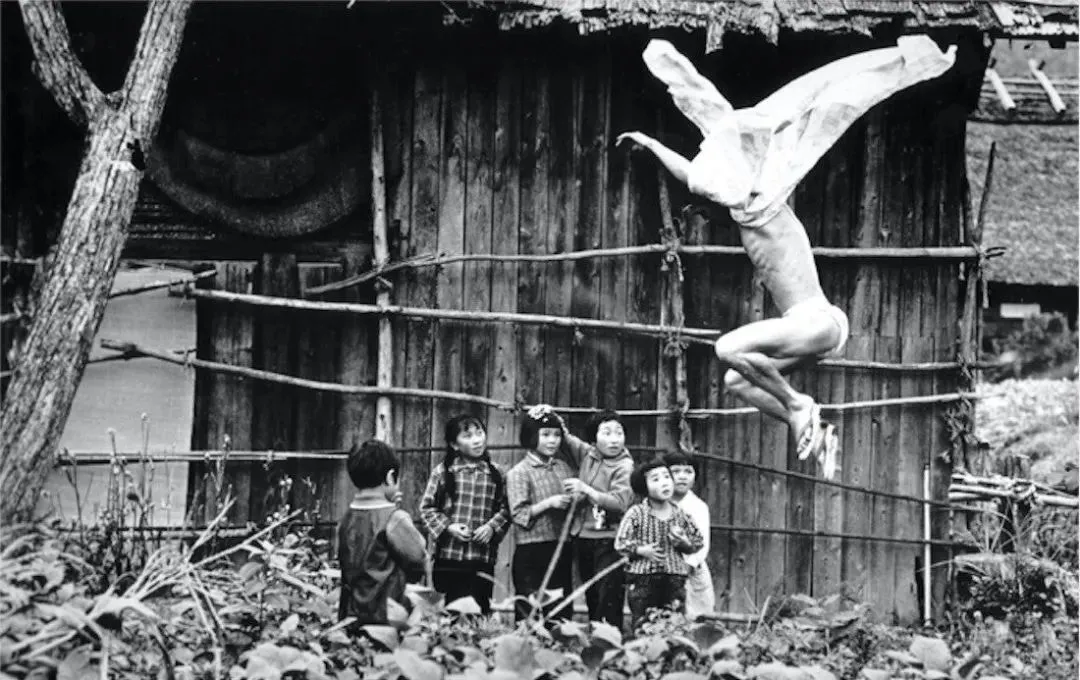
"Kamaitachi" records the performances of Tsutomu Hijikata in rural areas
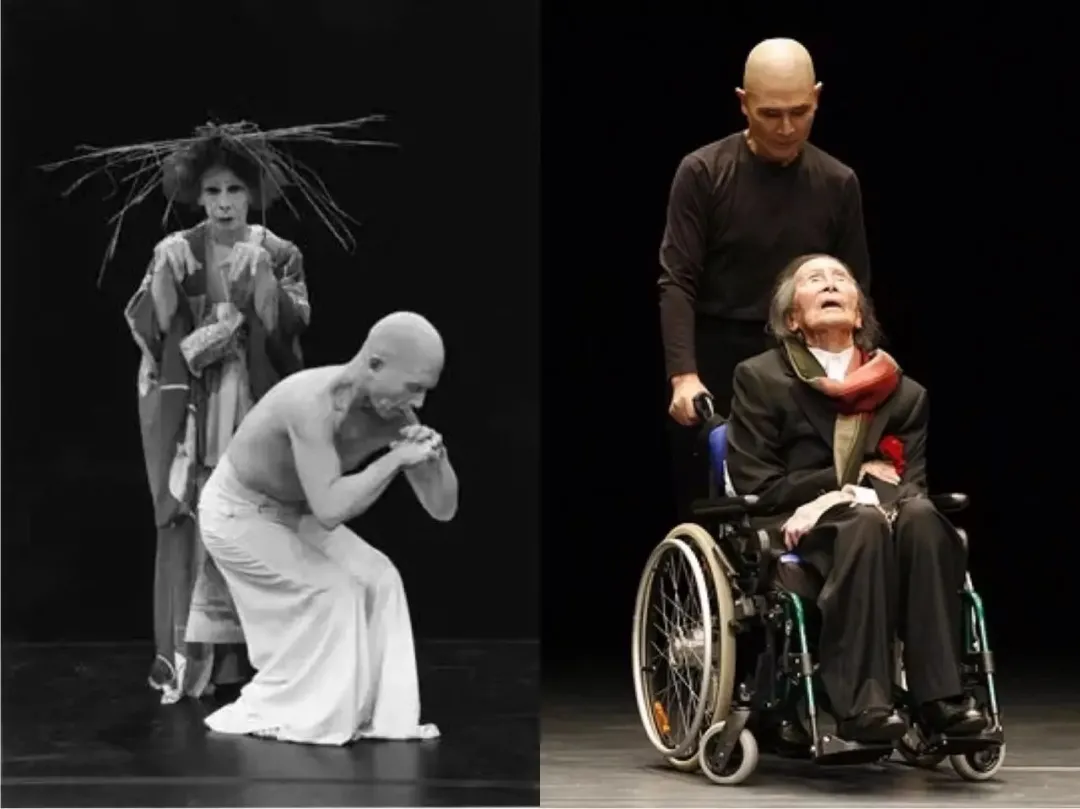
Left: Kazuo Ohno and Keito Ohno perform together; Right: Keito Ohno pushes the 100-year-old Kazuo Ohno onto the stage
"Butoh is the desperate standing of a corpse," a very mature form of modern dance in Japan, created by dancers Tatsumi Hijikata and Kazuo Ohno in 1959. It breaks the traditional Western aesthetic views on performance, movement, and the body, highlighting introspection and meditation through slow movements, focusing on the pursuit of spiritual liberation and freedom beyond the physical body. The white makeup erases the individual's self, resembling an empty shell of human form, discarding thoughts brought by the self and the mundane. Dancers cover themselves in white powder, performing screams, contortions, and crawling movements to express pain and tension. The white powder scatters during the dance, symbolizing the passage of life and revealing the form of death.
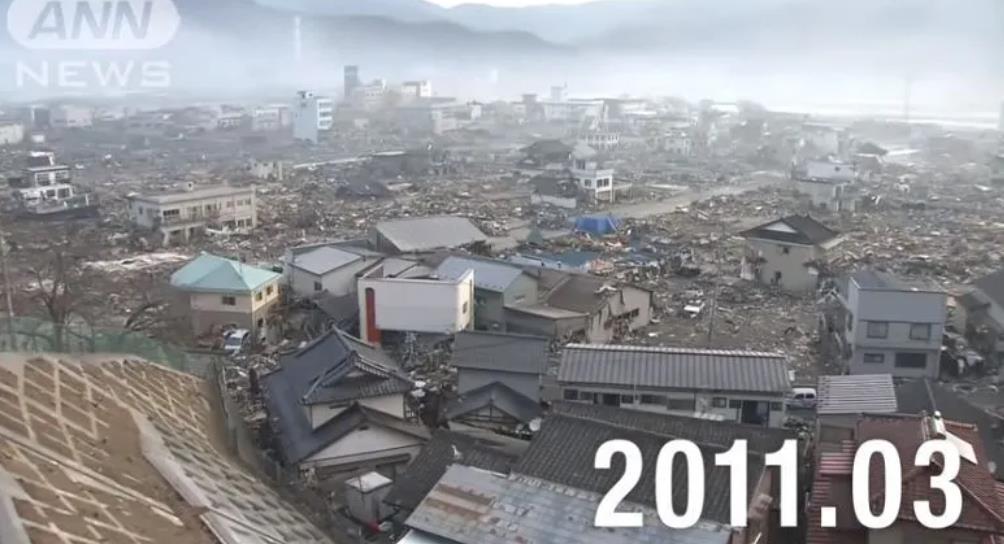
Changes in Ofunato City, Iwate Prefecture after the earthquake
Japan applied for the Olympics against the backdrop of the 311 earthquake and the Fukushima nuclear disaster, with the theme of: soul soothing and rebirth. Soul soothing is to comfort the spirits of those who died in the tsunami disaster, hoping that the successful hosting of the Olympics will help the Tohoku region emerge from the shadow of disaster and achieve economic revival. The COVID-19 pandemic erupted globally in 2020, causing the Tokyo Olympics to be postponed for a year, resulting in a significant number of deaths in many countries. Mourning the four million COVID-19 victims and cleansing the world's filth, using modern dance as an offering to the gods, in my view, is unique and aligns with the characteristics of Japanese culture. The opening ceremony employed elements of gloom and purification from Japanese culture to communicate with the gods, soothing the spirits of those who died from COVID-19, marking a historic innovation in the Olympic history.
Japan has a value system of "living towards death" and often confronts darkness and disaster directly. In the face of economic downturns and the global pandemic, excessive extravagance and celebratory performances do not align with the Japanese character. A grand feast could lead to backlash from various sectors, as well as negative sentiments. The Japanese tend to choose "low-key and frugal," replacing celebration with "simplicity" and "environmentalism," shifting from congratulation to commemoration, especially in a situation where there are almost no spectators at the venue and tourism and related revenues are minimal; this is also a reluctant choice.
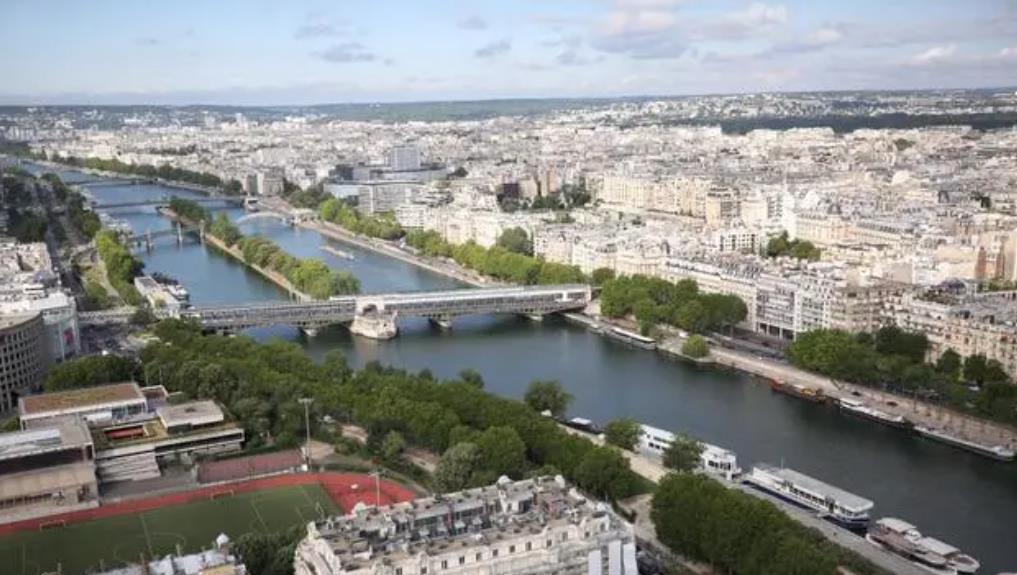
There are many symbolic objects in the venue, such as the white installation on the main stage, symbolizing Mount Fuji and the sun. A structure resembling an octagonal round hall is also located in the venue, primarily serving the purpose of soul soothing, honoring the deceased spirits. The performances by the actors in the venue are akin to offering sacred dance to the gods in a shrine, thus creating a performance space dedicated to sacrificial offerings.
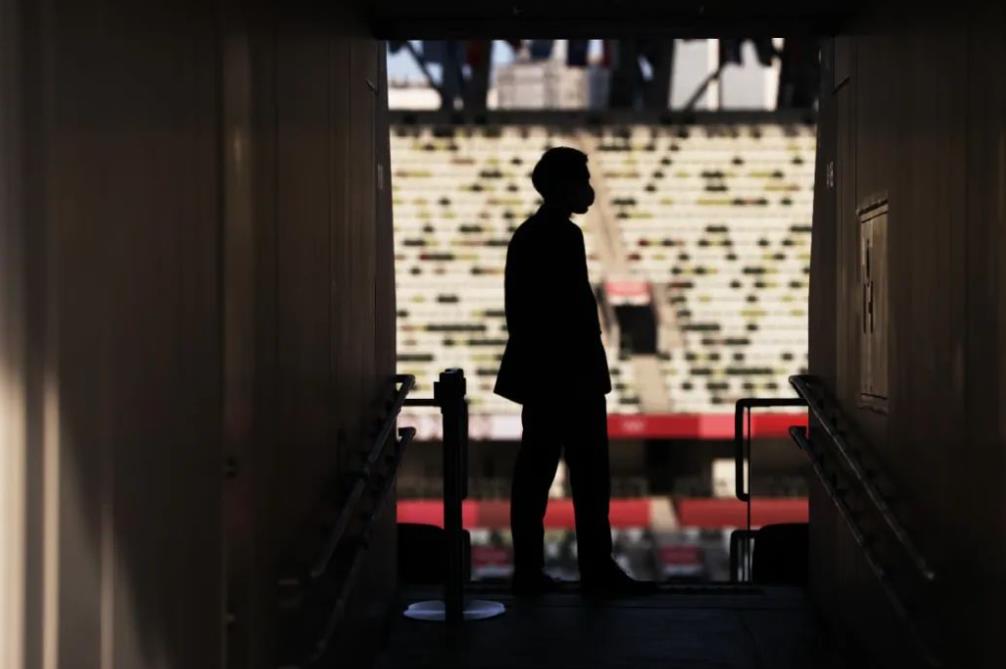
Security personnel inside the New National Stadium.
The Tokyo Olympic slogan "United by Emotion" emphasizes the importance of unity, inclusivity, non-discrimination, equality, and multiculturalism. For the first time in history, the athlete entrance ceremony featured both men and women jointly carrying the flag. Women holding national flags were openly recruited, selected based on ordinary appearances rather than weight, height, or looks, including at least two women with prosthetic limbs. Male and female athletes, referees, and staff taking the stage to swear an oath also particularly emphasized gender equality, reflecting racial equality, ethnic equality, gender equality, as well as equality for minority groups (LGBT) and people with disabilities in the details.
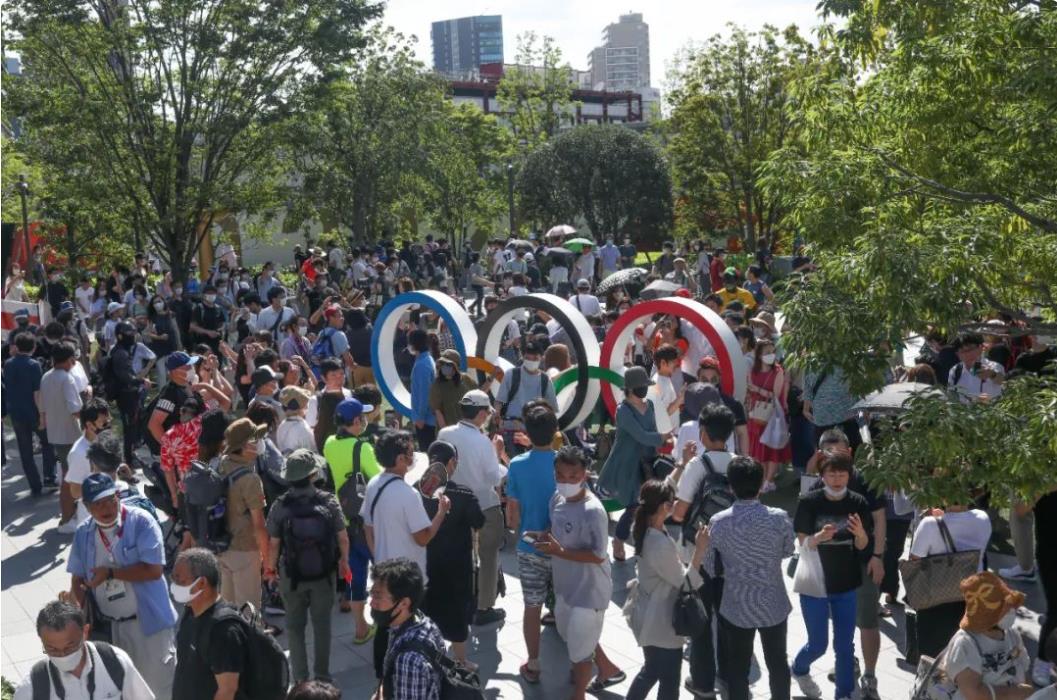
Outside the New National Stadium in Tokyo, Japanese citizens take photos with the Olympic rings symbol.
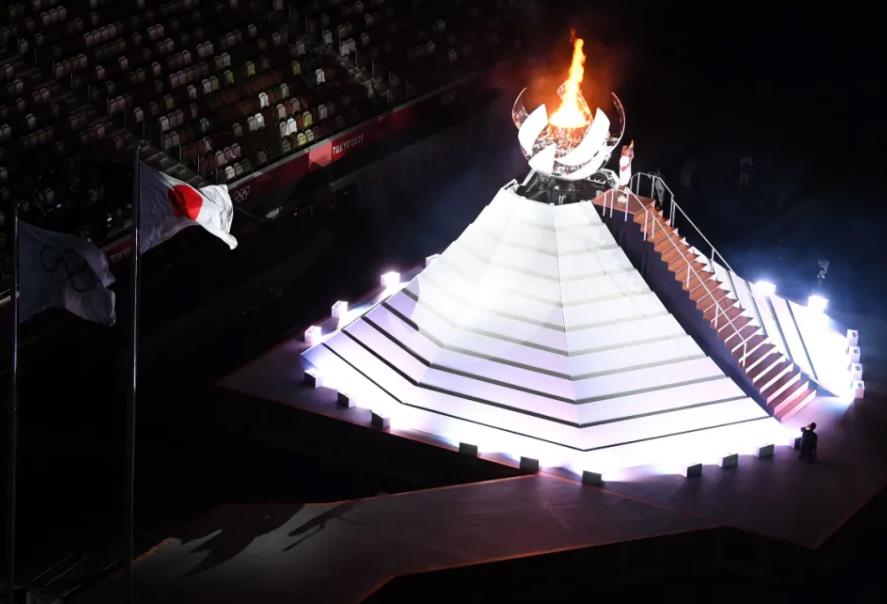
"The most environmentally friendly Olympic flame": Tokyo's "Green Flame" in 2020
During the torch relay of the 2020 Tokyo Olympics, the torch used eco-friendly fuel, producing a blue flame that starkly contrasted with the traditional red flame. This environmentally friendly initiative not only reduced carbon emissions but also reflected the Tokyo Olympics' commitment to sustainable development. The Tokyo Olympics was the first Olympic Games in modern history to be postponed. Due to the COVID-19 pandemic, the Tokyo Olympics originally scheduled for 2020 was postponed to July 23 to August 8, 2021. Due to the pandemic, the opening ceremony was held without an audience.
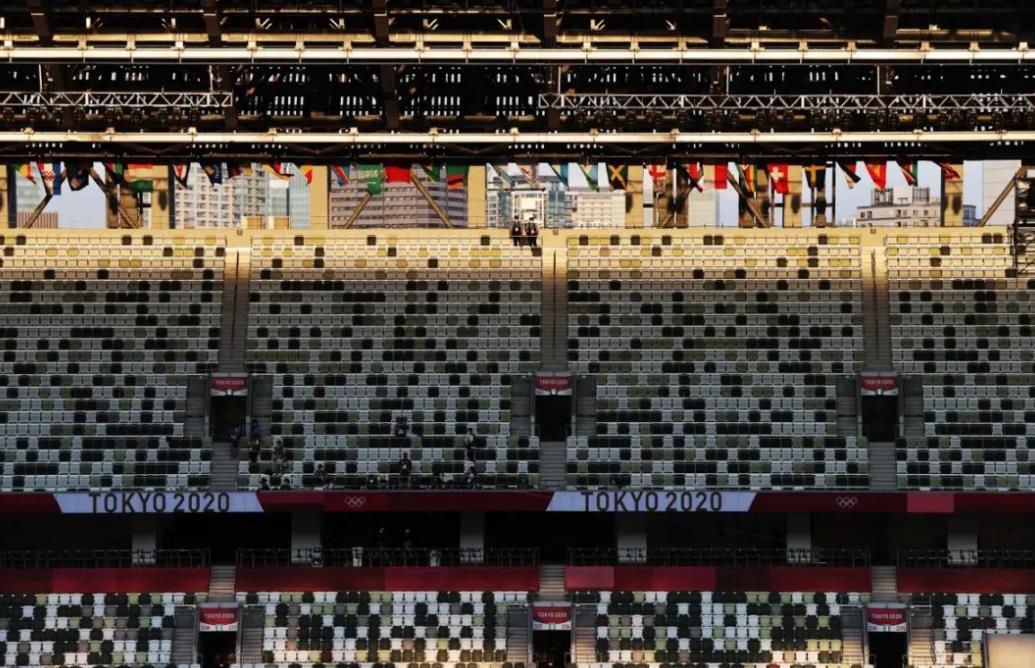
Empty stands in the stadium
